The Horses in Ghost of Tsushima – Wonderful Details and Fundamental Problems
Ghost of Tushima is an open world action adventure game released in 2020 and 2021 on PlayStation 4 and PlayStation 5 respectively. The game was developed by Sucker Punch Productions and published by Sony Interactive Entertainment.
I don’t usually review AAA games on here – the time investment of playing through 30-50 hours of gameplay is something I only consider justifiable if the game in question is one I am really interested for not-just-horsie reasons. When various people recommended Ghost of Tsushima to me in reaction to my commentary in last year’s Polygon Video on horses in games, I decided to make an exception.
The fact that I started playing it in August 2022 and am uploading this review about 9 months later might give you a hint as to how that’s been working out for me. Let’s take a closer look at the horses of Ghost of Tsushima.
This article is also available in video format:
Choosing a Horse
Our main character Jin Sakai starts the game on horseback as the 1247 Mongol Invasion lands on Komoda Beach. He soon needs to pick a new mount for himself after the losses of that battle, aided by his new ally, a thief named Yuna.
Jin’s story begins on horseback, at the side of his uncle Lord Shimura.
The three standard choices are a black horse, a dapple grey, and a “white” one. Here’s where the game makes its first relatively obvious horse mistake: a horse with a white coat but dark skin is actually called a grey/gray, whereas a true white horse would have unpigmented pink skin visible around eyes and muzzle. Oh well, we’ve seen worse, but it’s still a bit annoying because it’s such a common misconception.
This horse is grey, based on the dark skin around eyes and mouth, but is labelled “White” in the game.
An actual white horse has pink skin visible around eyes and muzzle. Image source
An additional option for some editions of the game is a Bay Dun with zebra striping on the legs and a shiny golden coat color. A pop up asks something along the lines of “If you chose the Digital Deluxe horse, it will be with you for your entire journey”. That this horse’s coloring is referred to by the special edition is a tad immersion breaking but I chose it anyway.
The horses come with traditional Samurai tack, including the characteristic Abumi stirrups and a bridle made of wide cloth bands. The horse model itself looks pretty good to me, though I lack the conformation judging expertise to analyse it in detail.
What kind of horse would a Samurai in the 13th century have been riding, anyway? Our two main options are the Taishu horse, a native breed from Tsushima Island that’s been bred there since the 8th century, or the Kiso horse, which was bred from the 6th century onward on Japan’s main island of Honshu, and which was historically used by the Samurai. Both breeds are pony-sized, standing at around 13 hands or 130 cm. Both the Taishu and the Kiso horse are critically endangered today, though preservation efforts are underway.
The Kiso horse, one of the native Japanese horse breeds and a likely mount for historical Samurai. Source
The ingame horses are significantly taller than the Kiso or Taishu horses would have been. (Screenshot has been brightened for visibility)
Historical Japanese horse tack - note the cloth bands on the bridle, and the large metal stirrups. Image Source
The tack fits the historical inspiration. (Screenshot has been brightened and rotated)
Jin’s horse in the game fits the stocky type and staunch midsection of the Taishu and Kiso horses, but is too tall to really represent either breed. The latter is likely an aesthetic choice, and I’m entirely willing to forgive it. It might have looked distractingly goofy to put this regular sized man in armor on a tiny pony.
A feature I deeply appreciate is that the game gives you a choice between three fitting names for your horse, that Jin will then occasionally use during gameplay when mounting or when calling for the horse. I love that this is a thing, but I thought it could have been used even more in the story.
I named my Digital Deluxe horse Sora.
Handling and Animation
Ghost of Tsushima follows the – in my opinion rather annoying – trend of blending between walk and trot based on how much you push the joystick on your controller. A practice that’s irritated me in Horse Club Adventures and Spirit: Lucky’s Big Adventure, but is also present in recent Assassin’s Creed games. The result is that moving consistently at a walk is something that requires active concentration. At least Ghost of Tsushima doesn’t blend between the walk and trot animation for weird in-between states like the other examples above.
The trot animation doesn’t let the foreleg extend quite far enough forward to look satisfying to my eye, and there’s definitely moments here or there where the forelegs look to be carrying weight while being bent, which is also one of my 8 Common Horse Mistakes that I want Game Developers to Stop Making.
Moving at a higher speed is a mixed bag: Pressing L3 to accelerate to a gallop feels pretty satisfying and looks alright from the back, but the side view is a lot more wonky. The horse’s belly distends weirdly in part of the gallop animation and the forelegs are thrown forward almost horizontally. Deliberate stylization or just bad horse anatomy? Either is possible, but I don’t love the result. The gallop animation is sometimes combined with a head-bobbing motion that I find too extreme to be either realistic or pleasant to look at. I also found myself missing a calm, chill canter in between the trot and the somewhat frenzied-looking gallop.
“Feels good but looks odd” applies even more strongly to one specific maneuver: being able to ride tight turns while staying at a canter is realistically important in mounted warfare, and it feels fantastic to maintain this maneuverability without transitioning down down to a trot. But oof boy does the animation for it look rough. Instead of maintaining a highly collected three beat canter, the animation transitions into a hectic stomping of the forelegs while the back legs awkwardly hop along. During most of this animation, the horse’s forelegs are bent in an S-curve in complete disregard of how a real horse’s legs move.
I am once again begging everyone to have a look at Alice Walsh’s twitter thread on horse limbs: the knee joint cannot be bent while the fetlock joint is flexed like that, because there’s no muscle on a horse’s lower leg, and this is not how the mechanics of their tendonds work. I’d also like to clarify that I analyse on a frame by frame level to illustrate clearly what is wrong – the reason I go through gameplay recordings frame by frame in the first place is because the end result looks so utterly messed up to my eye, not because these issues only become visible when stopping the animation at inopportune moments.
I’m reminded of similar thoughts I had about Elden Ring when I analyzed Torrent’s movement: I understand that game feel was prioritized over making the animation look good from all angles, but I just remain somewhat flabbergasted that apparently nobody in the whole process had enough of an interest in horse locomotion to go “hey this doesn’t look like how a horse moves actually” and do something about it. Or maybe someone did and tried but it was considered not high prio enough and/or out of scope, because let’s be real that’s how games are made. I know Inverse Kinematics on quadrupeds are a complex topic but considering all the technological marvels in games nowadays, I just find it hard to believe this is the best that’s possible.
Much Appreciated Details
Around the time Ghost of Tsushima was released, the horsie detail I saw the most hype for in my community was this screen of Jin sleeping next to his horse. This isn’t a specific scene in the story, but one of several “Tale Ending” screens and animations that you can get when concluding a mission. The reason why I’m embedding someone else’s clip here is that I didn’t actually get this animation in my own playthrough, because I stuck mostly to the main missions.
From the pose itself, to the peaceful ear twitching to the”huh? Time to go” wake up animation, I love and appreciate this a lot. In combat-oriented AAA games where mounts usually serve strictly as sped-up transportation, is so rare to see these sweet moments of peaceful interaction between any horse and rider. Now if only Jin didn’t let his poor Sora/Kage/Nobu sleep in a saddle and bridle. Buzzer noise.
Another “Tale End” screen shows Jin standing next to his horse, the latter giving him a playful nudge until Jin feeds it a treat, while yet other examples just show Jin meditating or drinking tea at scenic spots. These moments and animations are lovely, they add character and a wonderful sense of the mundane that is all too often missing from mainstream action video games.
These types of animations play sometimes when you’re done with a mission, but can’t be triggered intentionally.
Stolen horses will make their discontent known by idling angrily and neighing.
One detail that may go past the non-horsie player but brought me a lot of joy is that any horse you steal and ride off with has a different idle animation than your own mount: stolen horses are noticeably disquieted instead of standing still, they neigh and snort and lift their hind legs threatening to kick, they rear up slightly and throw their heads. Apart from the usual issue with wrongly bent forelegs, it is a truly marvelous display of “unhappy horse” behavior, and I deeply, deeply appreciate it.
There’s even a scene later on where you’re forced to temporarily ride an underfed and sickly-looking horse, and that steed makes its dislike of Jin known via the same discontented animation set.
Mounting and dismounting in motion feels very smooth.
You can’t jump on purpose, but the horse will leap by itself when necessary.
A convenience that I found surprisingly cool is that Jin can mount and dismount without the horse coming to a complete halt. While that may not be how the average modern equestrian mounts and dismounts their horse, it strikes me as a fitting choice for the game’s mood, and it feels so buttery smooth and intuitive that I found myself missing it the next time I played Horse Tales at work afterwards.
Narrative and Historical Authenticity
Caution: The rest of the article contains major spoilers for the story of Ghost of Tsushima. Skip to the “Conclusion” header if you’d prefer not to know what happens in the story.
Ghost of Tsushima is a game that takes its own narrative rather seriously. It’s obvious that a lot of care and attention went into the staging of important cutscenes, and the emotional impact of certain narrative beats. While the main plot and threat is the mongol invasion led by the fictional Khotun Khan, the emotional core of the game is the conflict between Jin and his uncle Lord Shimura, and their growing rift over Jin’s increasingly ruthless tactics in his fight against the mongols.
Stealthy backstabbing, poison and smoke bombs become the tools of the titular Ghost of Tsushima.
Lord Shimura thinks you should only stab people in the front, like a real man.
And I thought that conflict was really fucking dumb and it annoyed me a lot. Lord Shimura goes on and on in various cutscenes and dialogues about how a real samurai does not stab people in the back and fights with honor, even imprisoning Jin when the latter uses stealth and poison to take out a whole fortress by himself, instead of sacrificing their whole army in a frontal assault. The resulting dialogue and conflict felt cliché, contrived and repetitive as all hell to me. If this whole samurai’s honor thing had a legitimate historical basis, it might annoy me sightly less, but a bit of research into this subject matter shows that the myth of the “honorable samurai” is largely an invention of Japanese Nationalism in the late 19th and early 20th century. Samurai were warriors, they could not sacrifice efficiency for “honor” in every situation. Stealth tactics and poison were a part of their repertoire: the complete separation of Shinobi/Ninja versus Samurai as different people and classes is an invention of modern pop culture. (further reading here, here and here)
The game’s dialogue is not subtle about Shimura’s dislike for Jin’s stealth tactics. Interestngly, no mongols ever do anything stealthy themselves, so this particular reproach is a bit pointless.
Shimura suggests I just blame everything on my new thief friend and let her die in my stead, you know, definitely a very honorable action. The game doesn’t call him out on this in any way.
Ghost of Tsushima’s developer Sucker Punch takes deliberate liberties (more on that here) from historical authenticity - this is fine, and to a degree necessary in order to tell an engaging story. But in staking the game’s main emotional conflict on this chlichéd misconception that a samurai would have sacrificed hundreds of his own soldiers instead of employing methods like sneaking and poison, the resulting story utterly failed in its believability for me. The game presents the romanticized myth of the honorable samurai with a veneer of historical authenticity that I find intellectually dishonest.
This article from the Washington Post and this one by Polygon provides an excellent outline for why this portrayal of the noble samurai and the uncritical perpetuation of the myths around them is uncomfortable. I highly recommend reading them.
Emotional Impact or Lack Thereof
As a result of the issues described above, I was exhausted and annoyed by Ghost of Tsushima and its insistence to make me care about Jin and his supposed honor very quickly. And unfortunately, none of the mechanics gripped me enough to keep the game from became a chore as a result.
I’m not gonna go into any depth about the game’s combat, you can find plenty of opinions on that onany other review site.
As a teenager, I was a big fan of the Assassin’s Creed series, of the Batman Arkham games and the Uncharted series. Nowadays, I’m bored by the deeply formulaic placement of combat segments in these games’ mission design and my eyes threaten to roll out of their sockets whenever I’ve defeated one group of enemies and a dialogue snippet like “oh no, there are even more of them coming” tries to lampshade that the game is just repeatedly throwing groups of the same four enemy types at me to keep me busy for a bit longer.
Before Ghost of Tsushima, it had been almost 10 years since I last played a melee-combat open world action adventure with Assassin’s Creed IV: Black Flag, and I’m underwhelmed by how little appears to have changed since then. I enjoy details like how the game minimizes UI prompts in favor of having birds and foxes show you the way to points of interest, but those don’t make enough of a difference for me to really elevate the game to something I want to play.
Okay, so, I am cynical about mainstream blockbuster action adventure games these days and I don’t particularly enjoy this type of combat. That’s not really what this review is about though right, we’re here to talk horses. So what about their emotional impact?
At the end of the game’s second act, Jin escapes from his uncle’s castle to reunite with Yuna and his other allies in order to fight the mongols on his own terms and with his own “dishonorable” tactics. In his escape, his horse is struck in its croup by several arrows. “Forgive me, Sora,” Jin says and spurs his wounded steed onwards. The following scene shows a weakening Sora/Kage/Nobu walking on and finally collapsing, against the backdrop of a burning forest, accompanied by a hauntingly beautiful song with Japanese lyrics.
“I’m sorry I couldn’t protect you,” Jin tells his loyal companion, as the latter gives a final huff and nicker, before a title card announces the beginning of Act III and its objective to finally kill the invading Khan.
It’s a beautiful scene, and it did bring a few tears to my eyes even as I’d long given up on this game’s ability to make me feel things. For players who were otherwise able to take Ghost of Tsushima’s story at face value, I imagine the horse death hit even harder. That the game lets you pick one of three voice-acted names for the horse and that it explicitly and wrongly tells you it will be your companion for the whole game are obviously serving this exact moment, and I think that works relatively well.
Conclusion
I played Ghost of Tsushima for the horsie content alone despite knowing it’s not really the type of game I’m currently interested in otherwise. I’m glad I finished it, but I don’t recommend doing that unless you share my pointless dedication to turning lukewarm takes into content.
There are a lot of minor aspects about the horses in Ghost of Tsushima that I greatly appreciate and applaud Sucker Punch Productions for. Unfortunately, the overall appeal of the horse fails in its basic movement animation for me, and the emotional impact of key narrative moments – with and without horse – is drastically limited by the game hinging its dramatic core onto this pointless dichotomy of honorable versus dishonorable warfare.
There is no doubt that Ghost of Tsushima is a competently made game overall. Its scenery and cinematic framing are gorgeous throughout, and it’s obvious that a lot of care and effort went into the creation of a stylistically coherent experience.
But it’s also shown me that I’m doing the right thing for me by largely staying away from mainstream AAA games. If I’m going to force myself to play games with mediocre horse animation that I don’t really enjoy, I’d much rather go back to picking weird niche horse games where I’m at least bringing something new to the table by talking about their quality at all.

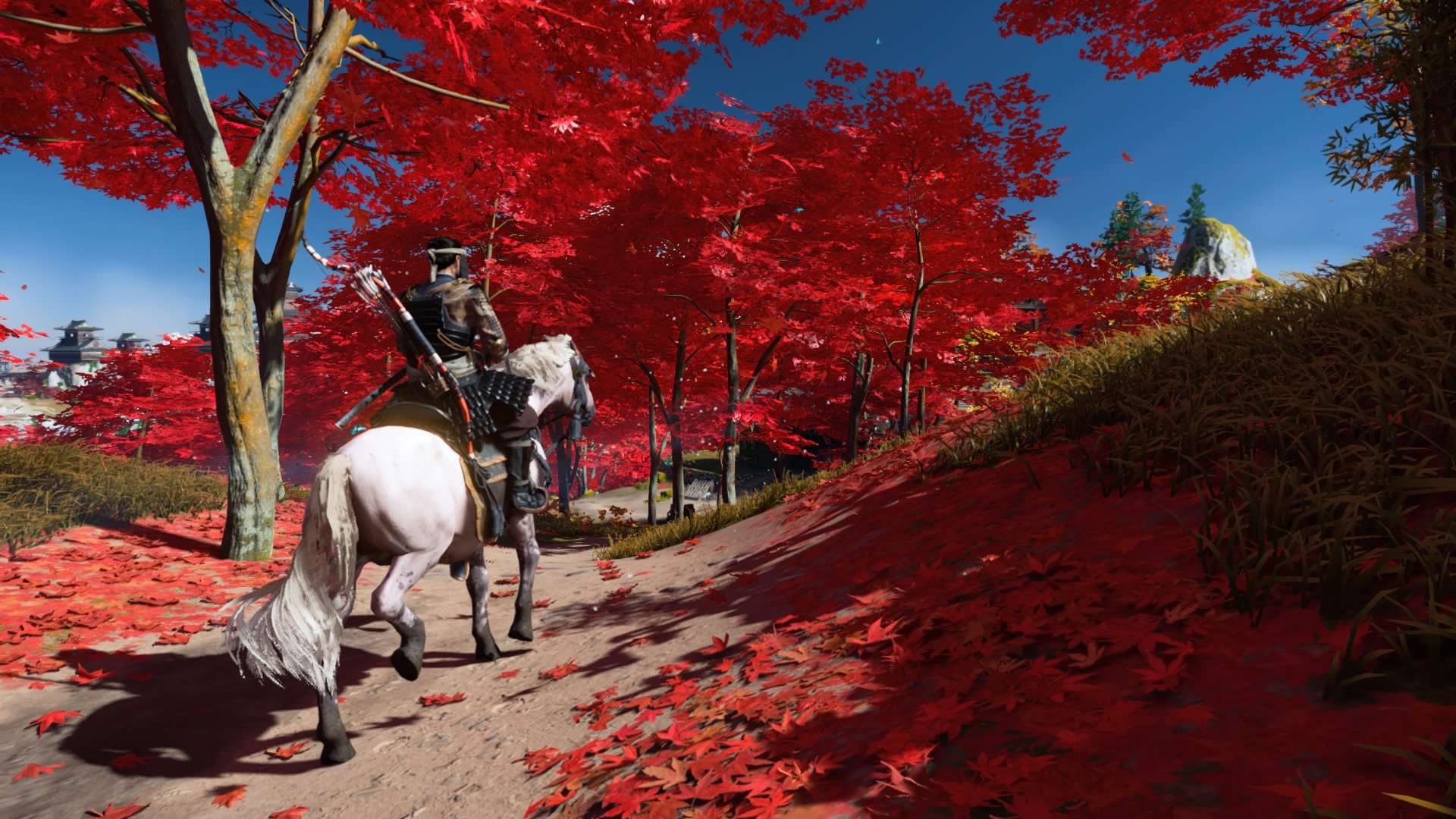
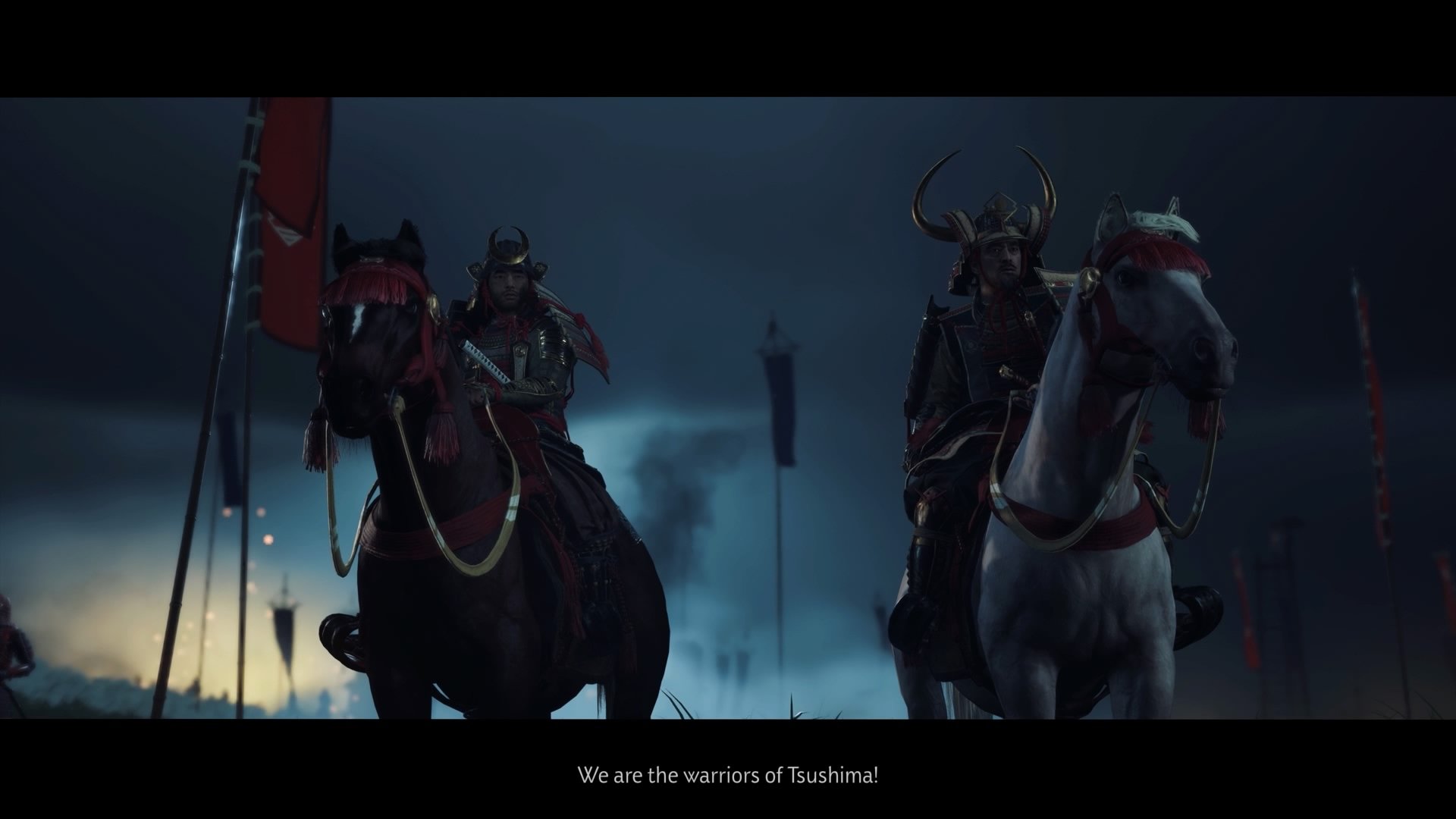
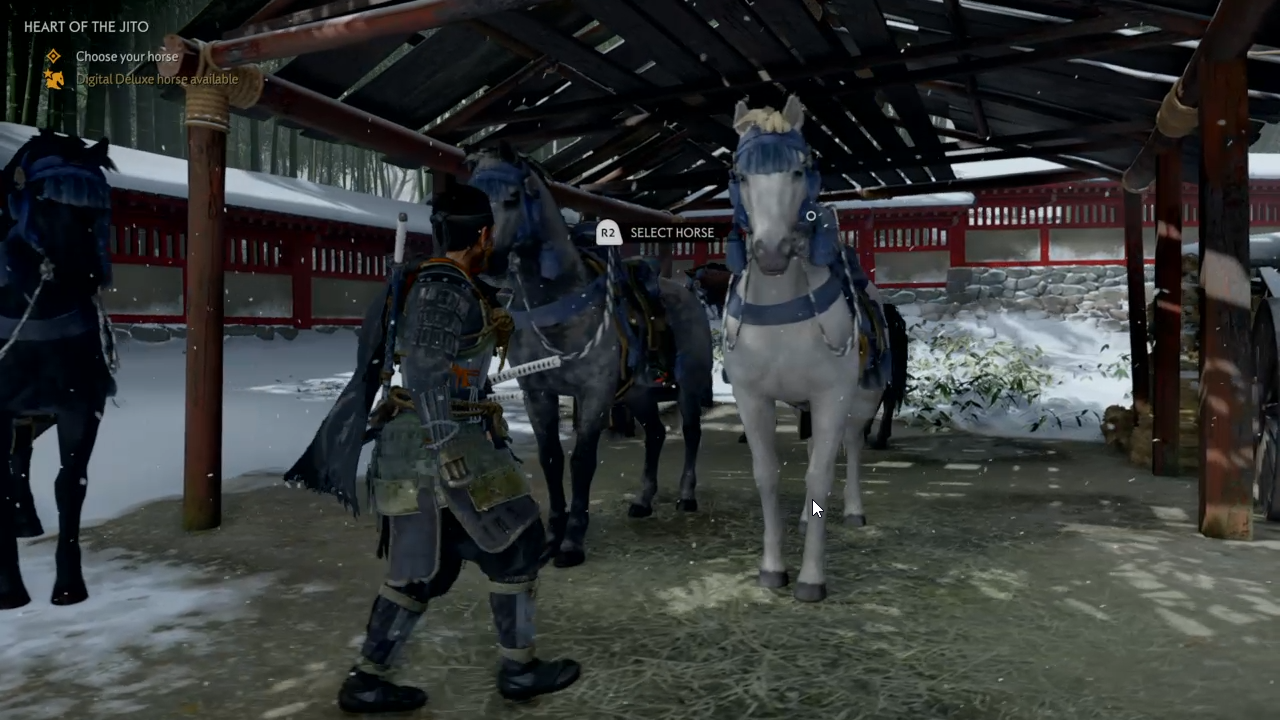
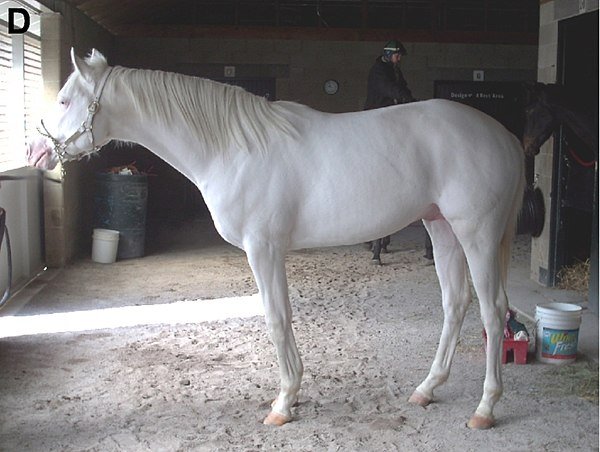
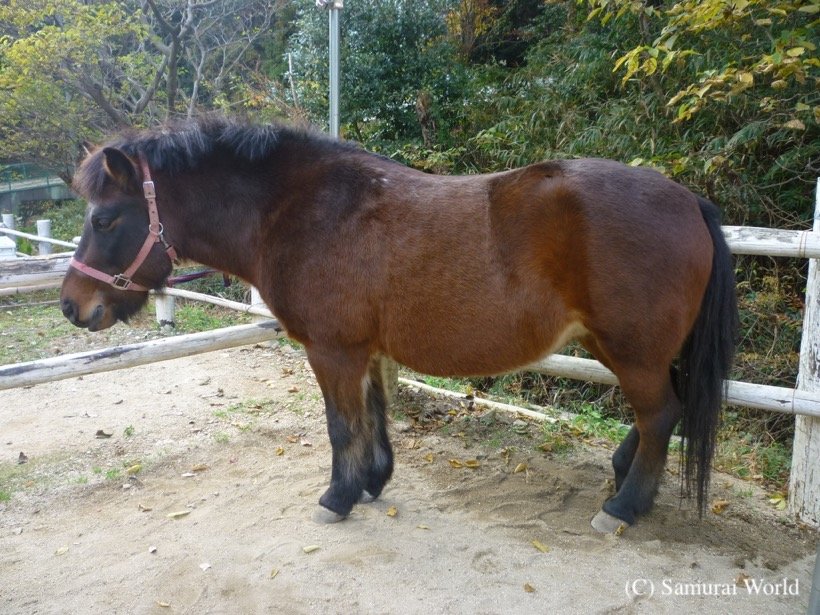

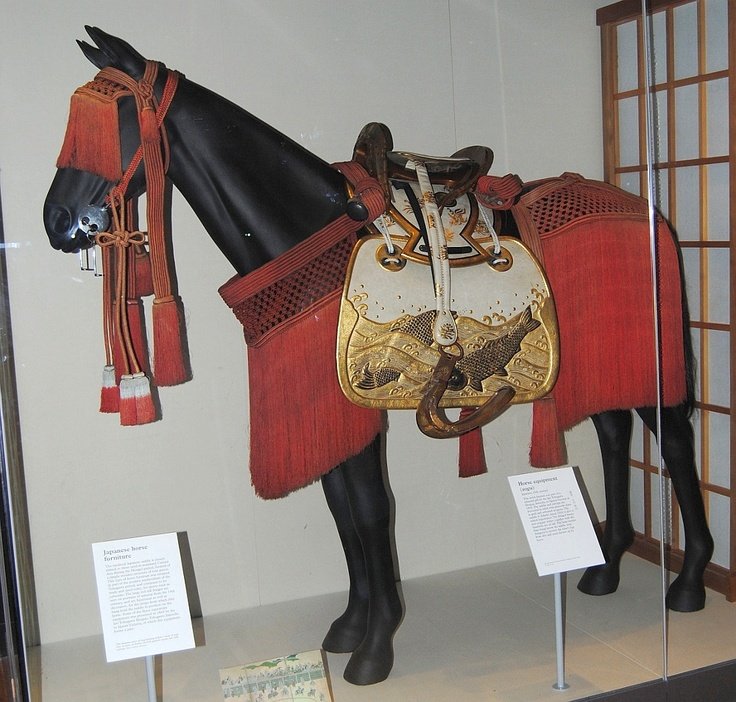
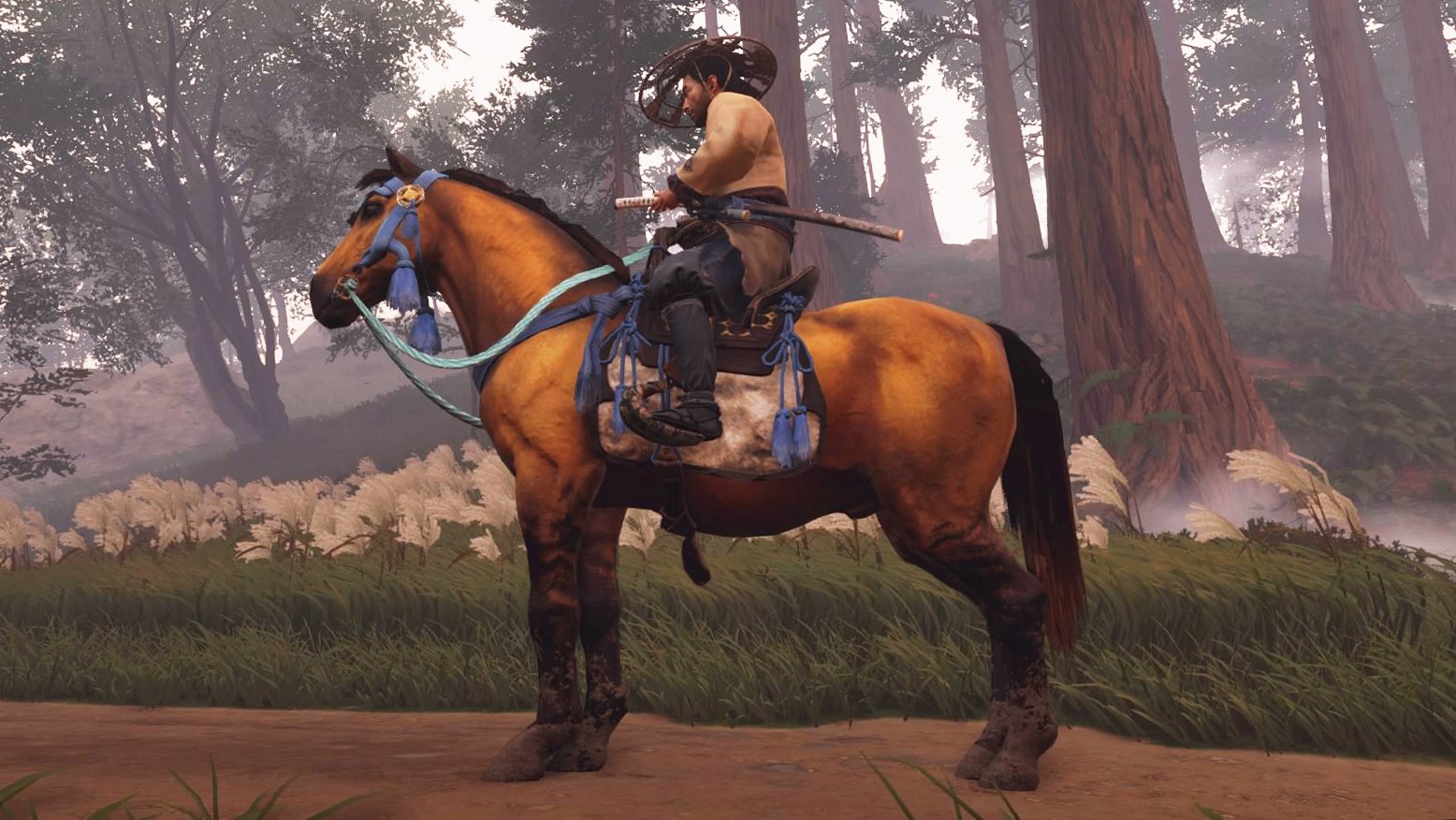



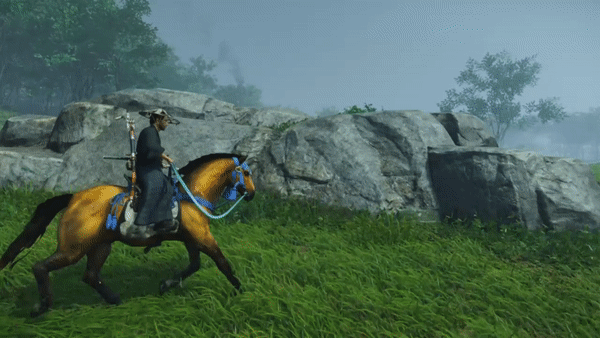
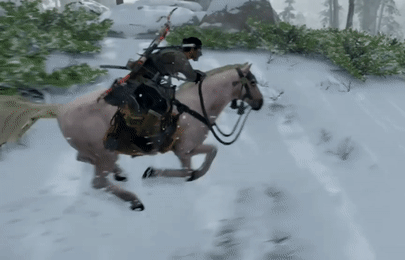

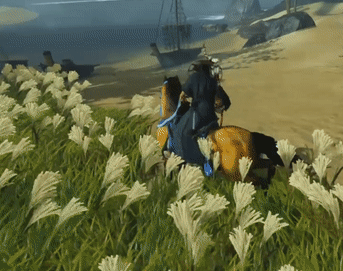
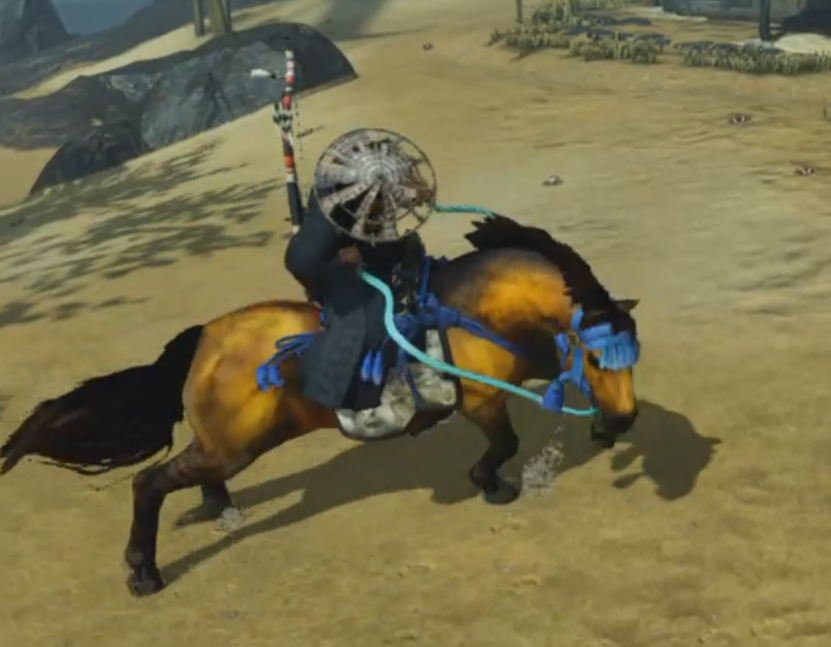


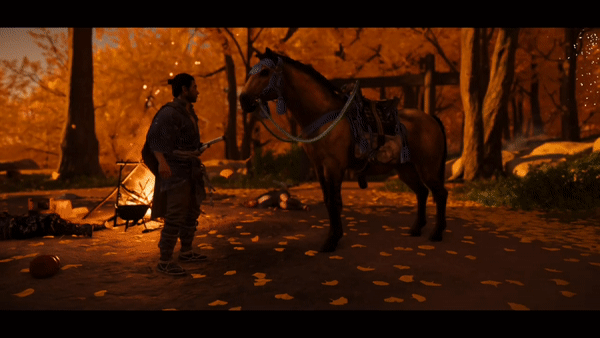


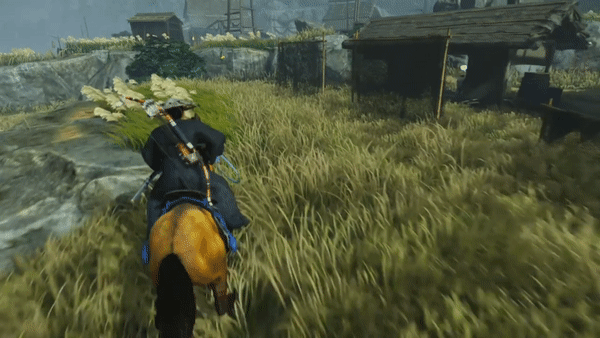






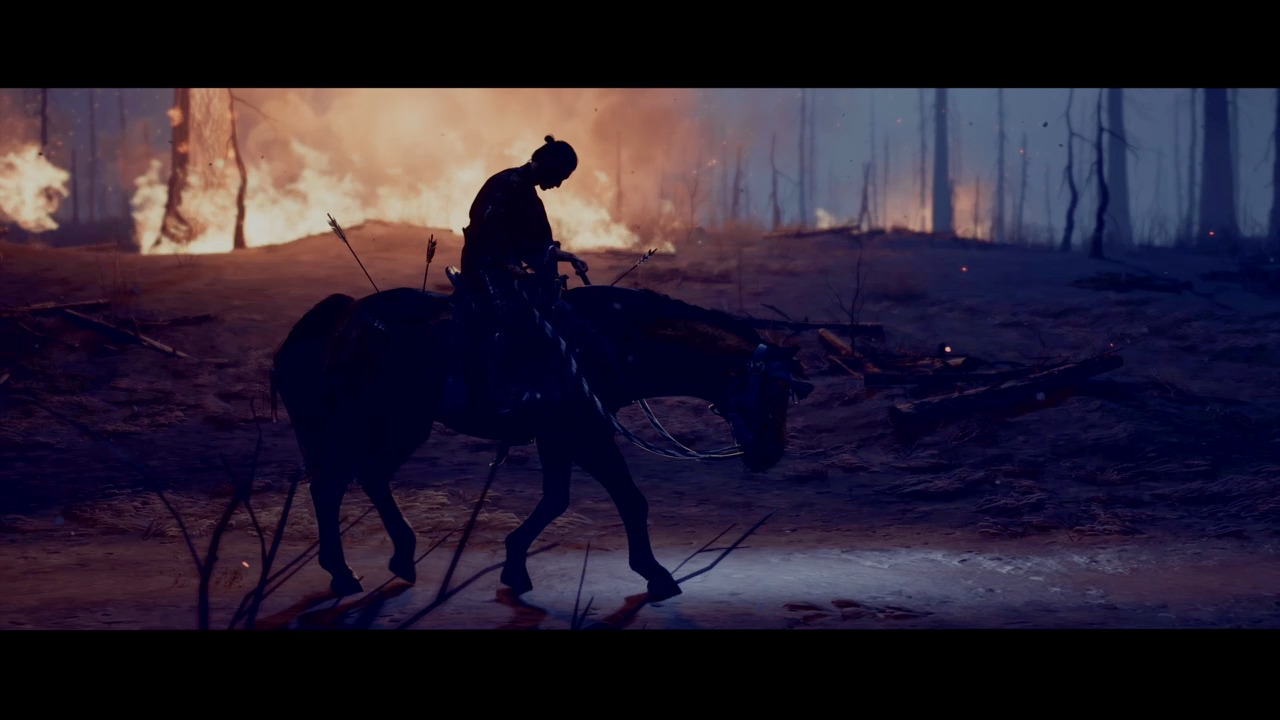

I figured I might as well put together some impressions and opinions on the horse-like creature that you ride in Elden Ring. And then I got sucked in and am now 30 hours into it with no intention of stopping soon.
If you’re not interested in detailed analysis of horse animation, then you’ve come to the wrong website. But this is The Mane Quest and complaining extensively about how horse legs work or don’t work is what we do. Let’s begin.